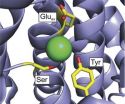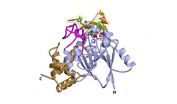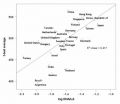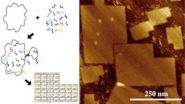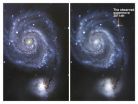(Press-News.org) He's not a dentist, but Christopher Miller is focused on fluoride. Two studies from his Brandeis University lab provide new insights into the mechanisms that allow bacteria to resist fluoride toxicity, information that could eventually help inform new strategies for treating harmful bacterial diseases. The studies appear in The Journal of General Physiology (JGP).
Although most animal cells are protected from direct exposure to fluoride, this toxic element is a serious threat to single-celled organisms like bacteria and yeast. As a result, their plasma membranes carry two different types of proteins to help rid the cell of unwanted fluoride: fluoride/hydrogen antiporters use energy to actively pump fluoride "uphill" out of the cell; and fluoride-specific "Fluc" ion channels mediate the passive "downhill" movement of fluoride across the cell membrane.
Fluc channels were first identified by Miller and colleagues very recently, in 2013. In the September issue of JGP, they now provide the first quantitative data demonstrating how these passive channels can help protect bacteria from fluoride. The authors found that fluoride accumulates in E. coli lacking Fluc when the external environment is acidic. In such acidic environments, fluoride enters the cell in the form of HF (hydrofluoric acid)—which easily permeates the membrane—and breaks down in the cell's lower acidity; Fluc provides a means of escape for the highly charged fluoride ions. They also found that bacteria proliferation was stalled by high fluoride exposure, indicating that targeting Fluc channels with antibiotics could be an effective way to slow bacterial growth.
In the August issue of JGP, Miller and colleagues unearthed new information about fluoride/hydrogen antiporters—also recently discovered—which are part of the CLC superfamily of proteins that are known for exporting chloride. The authors explored why this subset demonstrates higher selectivity for fluoride—which is essential for their function because chloride is so much more abundant in the environment—and were able to determine key structural differences that could account for the preferential selectivity of fluoride.
INFORMATION:
Brammer, A.E., et al. 2014. J. Gen. Physiol. doi:10.1085/jgp.201411225
Ji, C., et al. 2014. J. Gen. Physiol. doi:10.1085/jgp.20111243
About The Journal of General Physiology
Founded in 1918, The Journal of General Physiology (JGP) is published by The Rockefeller University Press. All editorial decisions on manuscripts submitted are made by active scientists in conjunction with our in-house scientific editor. JGP content is posted to PubMed Central, where it is available to the public for free six months after publication. Authors retain copyright of their published works and third parties may reuse the content for non-commercial purposes under a creative commons license. For more information, please visit http://www.jgp.org
How bacteria battle fluoride
2014-09-11
ELSE PRESS RELEASES FROM THIS DATE:
Structure of enzyme seen as target for ALS drugs
2014-09-11
VIDEO:
In this movie, the Dbr1 enzyme rotates 360 degrees. Partially inhibiting Dbr1 could represent a new way to treat most cases of amyotrophic lateral sclerosis (ALS), according to a new...
Click here for more information.
SAN ANTONIO, Texas, U.S.A. (Sept. 10, 2014) — Investigators from the School of Medicine at The University of Texas Health Science Center at San Antonio have determined the first high-resolution structure of an enzyme that, if partially inhibited, could represent ...
Hold the mayo
2014-09-11
You are what you eat, the saying goes, and now a study conducted by researchers at UC Santa Barbara and the University of Pittsburgh suggests that the oft-repeated adage applies not just to physical health but to brain power as well.
In a paper published in the early online edition of the journal Prostaglandins, Leukotrienes and Essential Fatty Acids, the researchers compared the fatty acid profiles of breast milk from women in over two dozen countries with how well children from those same countries performed on academic tests.
Their findings show that the amount of ...
Researchers create world's largest DNA origami
2014-09-11
Researchers from North Carolina State University, Duke University and the University of Copenhagen have created the world's largest DNA origami, which are nanoscale constructions with applications ranging from biomedical research to nanoelectronics.
"These origami can be customized for use in everything from studying cell behavior to creating templates for the nanofabrication of electronic components," says Dr. Thom LaBean, an associate professor of materials science and engineering at NC State and senior author of a paper describing the work.
DNA origami are self-assembling ...
New superfoods could help key protein keep bodies healthy
2014-09-11
A new generation of new superfoods that tackle heart disease and diabetes could be developed following research into a protein that helps keep cells in our bodies healthy.
Researchers at the University of Warwick found that the protein, called Nrf2, continually moves in and out of the nuclei of human cells to sense the cell's health and vitality.
When Nrf2 is exposed to threats to the cell's health it oscillates faster and activates an increase in the cell's defence mechanism, including raising the levels of antioxidant.
The researchers, from the University's Warwick ...
Childhood mentors have positive impact on career success
2014-09-11
New research from North Carolina State University finds that young people who have had mentors are more likely to find work early in their careers that gives them more responsibility and autonomy – ultimately putting them on a path to more financially and personally rewarding careers.
"We wanted to look at the long-term impacts on mentees in naturally occurring mentorship relationships, rather than participants in formal mentorship programs," says Dr. Steve McDonald, an associate professor of sociology at NC State and lead author of a paper on the work. "And we found ...
Graphene paints a corrosion-free future
2014-09-11
The surface of graphene, a one atom thick sheet of carbon, can be randomly decorated with oxygen to create graphene oxide; a form of graphene that could have a significant impact on the chemical, pharmaceutical and electronic industries. Applied as paint, it could provide an ultra-strong, non-corrosive coating for a wide range of industrial applications.
Graphene oxide solutions can be used to paint various surfaces ranging from glass to metals to even conventional bricks. After a simple chemical treatment, the resulting coatings behave like graphite in terms of chemical ...
Lurking bright blue star caught!
2014-09-11
This release is available in Japanese.
A team led by Gastón Folatelli at the Kavli IPMU, the University of Tokyo, has found evidence of a hot binary companion star to a yellow supergiant star, which had become a bright supernova. The existence of the companion star had been predicted by the same team on the basis of numerical calculations. This finding provides the last link in a chain of observations that have so far supported the team's theoretical picture for this supernova. The results are published in the Astrophysical Journal Letters and have wide implications for ...
High levels of physical activity linked to better academic performance in boys
2014-09-11
A recent Finnish study shows that higher levels of physical activity are related to better academic achievement during the first three school years particularly in boys. The study published in PLOS ONE was conducted in collaboration with the Physical Activity and Nutrition in Children (PANIC) Study conducted at the University of Eastern Finland and the First Steps Study at the University of Jyväskylä.
The study investigated the relationships of different types of physical activity and sedentary behavior assessed in the first grade to reading and arithmetic skills in grades ...
Smokers who consume too much sodium at greater risk of developing rheumatoid arthritis
2014-09-11
A new study published online in the journal Rheumatology today indicates that the interaction between high sodium intake and smoking is associated with a more than doubled risk of developing rheumatoid arthritis (RA).
The study, carried out by Björn Sundström and colleagues from the Department of Public Health and Clinical Medicine, Rheumatology at Umeå University, Sweden, was carried out to see whether recent animal and human cell study results that showed a link between a high sodium intake and RA would yield similar results in a nested case-control study of data from ...
'Fat shaming' doesn't encourage weight loss
2014-09-11
Discrimination against overweight and obese people does not help them to lose weight, finds new UCL research funded by Cancer Research UK.
In a study of 2,944 UK adults over four years, those who reported experiencing weight discrimination gained more weight than those who did not. On average, after accounting for baseline differences, people who reported weight discrimination gained 0.95kg whereas those who did not lost 0.71kg, a difference of 1.66kg.
The research, published in the journal Obesity, contradicts the common perception that discrimination or 'fat shaming' ...
